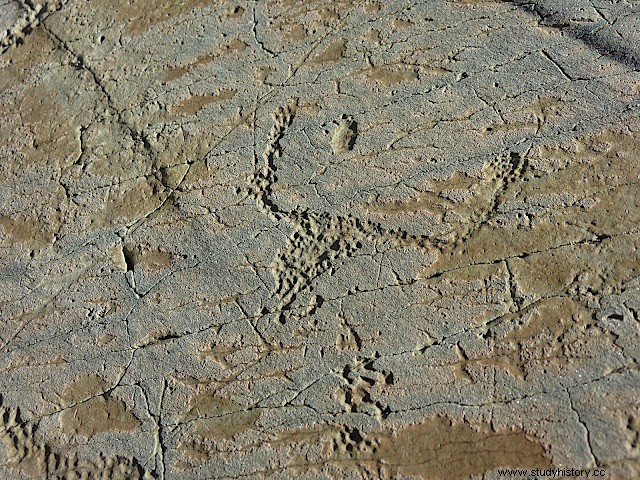Located in the Mercantour National Park, in the south of France, the Valley of Wonders (Vallée des Merveilles ) is an exceptional place in every sense, but it is especially interesting for lovers of history and art because there you can see more than 40,500 petroglyphs and protohistoric rock carvings dating from the Chalcolithic and the early Bronze Age, which become the largest concentration of these in Europe.

They are distributed in seven valleys located at more than 2,000 meters of altitude, around Mount Bégo and Rocher des Merveilles, mainly in France, north of the town of Menton, but with a sector, Vei del Bouc, on the Italian side.
The petroglyphs are located on stone outcrops scattered throughout the valley, and were first identified by the British archaeologist Clarence Bicknell in 1881, who over the next twenty years studied, copied and cataloged them, making more than 10,000 drawings. The sculptor Carlo Conti analyzed them between 1927 and 1942.

Systematic study of it began in 1967, when French archaeologist Henry de Lumley, together with his graduate students, began classifying petroglyphs in an area of 40 square kilometers. The largest concentration of them occurs on the slopes of Monte Bégo, in an area of about 14 square kilometers.
The engravings represent objects such as daggers, axes and scythes, geometric figures that can be suns, stars and spirals, ovals with intersecting lines that could represent the earth, animals with horns and some anthropomorphic figures have even been found. According to Lumley, they would be the work of a Bronze Age Mediterranean people who worshiped the bull, and for whom Mount Bégo would be a sacred place.

But there are also many more recent engravings scattered throughout the site, called linear engravings . The oldest of these is a Latin inscription from the 1st century AD:HOC QVI SCRIPSIT PATRI MIII FILIVM PIIDICAVIT. Other figures, anthropomorphic and in the shape of a cross, are attributed to the Middle Ages, and there are even figures of soldiers that may be from the 18th century.
The researchers believe that the oldest engravings are related to the beliefs and sacred rites of the farming populations of the Copper and Bronze Ages. Possibly Mount Bégo would constitute a divinity for them, both because of the abundant waters that flow from it and because of the violent storms that occur there.

The most represented theme in the petroglyphs is the bull, followed by geometric representations, weapons and anthropomorphic figures, some of which have received names or nicknames:the Magician, the Chief of the Tribe, the Dancer, etc. Other representations are more enigmatic, such as the Tree of Life .
In recent years numerous interpretive theories have been suggested, relating the petroglyphs to the position of the stars or the relationship between the sun and the earth. Some, like the University of Nice researcher Chantal Jègues-Wolkiewiez, suggest that the entire Valley of Wonders may have been a gigantic astronomical observatory. It is based on the fact that in the Bronze Age the sun rose through the constellation of Taurus, which would also explain the cult of this animal in Neolithic Liguria and even the Cretan legend of the Minotaur.

Others, like the ethnologist Emmanuel Larrouturou, believe they have to do with lunar cycles.
Today the site is still studied by teams of archaeologists and students who take turns every summer to inventory, map, photograph, record and digitize the finds, under the direction of universities, museums and scientific institutes financed by the French Ministry of Culture.
There is a path that crosses the valley and can be covered in about 3 or 4 hours of walking. Some of the petroglyphs are visible from this path, but it is forbidden to leave it without the company of an official guide to visit the engravings.
